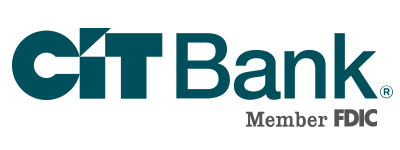Pros:
- Low opening required amounts
- Competitive interest rates on accounts
- No monthly maintenance fees
- Can open accounts entirely online
Cons:
- Limited account options
- Must link an external bank account
- No checks or debit cards available
- Early withdrawal fee on CDs is high
Pros:
- Reimbursement of ATM fees
- Competitive interest rates on accounts
- Interest rates are not tiered
- Free first order of checks with checking
Cons:
- Not a wide variety of accounts
- High opening required amounts
- Accounts have monthly fees
- Not all CDs offer competitive rates
The required amounts to open Comenity Direct accounts are low. The Comenity Direct savings account requires $100 to open. Each of the CDs offered through Comenity Direct require $1,500 to open.
The interest rates for Comenity Direct accounts are competitive. Their rates are much higher than typical bank rates. They are competitive with other online accounts. To earn interest on CDs, you must keep $1,500 in the CD. The high-yield savings account only requires $1.00 to earn interest.
Comenity Direct accounts do not have monthly maintenance fees. There are not set account balances required to avoid the monthly fees. Their accounts are free. The CDs have a fee if you withdraw the money before the maturity date, but no monthly fee.
All Comenity Direct accounts can be opened online. You do not need to visit a branch location or mail in part of the application. The entire account opening process is online. You must be at least 18 years old and have a social security number. You must be a resident of the United States with an address. You cannot open an account with a P.O. Box.
Comenity Direct offers limited accounts. They offer a high-yield savings account and CDs. The CD terms range from one to five-years. There are no CD terms shorter than one year. Comenity Direct does not offer checking or money market accounts.
Comenity Direct accounts require a linked external account. You can link an account with your current bank. Once you link the two accounts, you can transfer money electronically. You can also have money directly deposited into your Comenity Direct account.
The Comenity Direct high-yield savings account does not offer checks or debit cards. Federal law allows for six withdrawals each billing statement from a savings account. Make withdrawals through electronic transfers into the linked external bank account.
Comenity Direct offers CD terms from one to five-years. The early withdrawal fees for these CDs are high compared to other online CDs. For terms from 12-months to three-years, the fee is 180 days of interest. For terms four-years or longer, the fee is 365 days of interest.
You can withdraw money from any ATMs with the specific “Plus” logo. If you withdraw money from another ATM, you are reimbursed for the fees charged. CalFirst will reimburse up to $6.00 each statement cycle in ATM fees.
Most CalFirst accounts offer competitive interest rates. The interest rates are not tiered, so you earn the highest rates offered on any balance in the account. Interest is paid monthly on the actual daily balance.
The interest rates for CalFirst accounts are not tiered. Any amount you have in their accounts earns the competitive interest rates. You do not have to have a certain amount in the account to earn the most competitive rates.
The first order of checks is free when you open an interest checking account. You get an ATM card when you open an interest checking account. Free online bill pay comes with each CalFirst checking account opened.
CalFirst does not have a wide variety of accounts. No business accounts are available, only personal deposit accounts. One money market account and savings account are available. There is an interest checking and one regular checking account. CalFirst only offers five different CD terms.
CalFirst accounts have high opening amounts. The money market account and CDs require $5,000 to open. The interest checking account requires $2,500 to open. The savings account and regular checking account both require $1,000 to open.
The accounts at CalFirst all have a monthly fee. The fees range from $10 to $20 a month, depending on the account you open. Waive the fee by keeping a set amount in CalFirst accounts. You can also have a combined balance between a variety of CalFirst accounts.
Not all the CD terms offer competitive rates. The most competitive rates are the three-month, six-month, and the one-year terms. The two-year and three-year terms have interest rates much lower than the other terms. Regular CDs require $5,000 to open. The IRA CDs require $2,000 to open. The only fees are if you withdraw the money before the maturity date.


